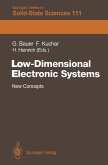Since the first bipolar transistor was investigated in 1947, enormous efforts have been devoted to semiconductor devices. The strong world wide competition in fabricating metal-oxide-semiconductor field-effect of develop transistor (MOSFET) memories has accelerated the pace ments in semiconductor technology. Bipolar transistors play a major role due to their high-speed performance. Delay times of about 20 ps per gate have already been achieved. Because of this rapid technologi cal progress, it is difficult to predict the future with any certainty. In 1987 a special session on ultrafast bipolar transistors was held at the European Solid-State Device Research Conference. Its aim was to sum marize the most recent developments and to discuss the future of bip olar transistors. This book is based on that session but also includes contributions by other participants, such that a broad range of up-to is presented. Several conclusions can be drawn from date information this information: the first and most important is the very large poten tial for future progress still existing in this field. This progress is char acterized by the drive towards higher speed and lower power con sumption required for complex single-chip systems, as well as by sev eral concrete technological implementations for fulfilling these dem is that a large part of this potential can be ands. The second conclusion realized by rather unsophisticated techniques and configurations well suited to uncomplicated transfer to fabrication.








